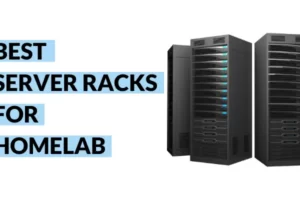In the quest of converting your home into a smart one, it’s important to be thorough.
Just yesterday, one of my readers messaged me saying how he wanted an Alexa-compatible thermostat, but the one he got didn’t have that.
I wanted to address one similar topic through this brief article.
I will dwell on the technical bits, but only to the extent, it helps you make the right purchase decision.
So, are thermostats battery-powered?
Most if not all thermostats require batteries to carry out inherent functions like power backup, surge protection, and data saving. The batteries used can either be AA, AAA, button style, or even a 9-volt battery.
While that does answer the query briefly it opens up a whole host of doubt fronts.
What is the role of batteries in a thermostat? Should you only choose a thermostat with dedicated batteries? How to know if your thermostat has run out of batteries?
How to change thermostat batteries and are any thermostats available in the market that do not require batteries?
As I said, this is a very important discussion in light of making a purchase decision. A question that is often overlooked.
Let’s change that today.
Also, this isn’t the first time I am discussing thermostats here on Yantraas. Here are a few more articles, that append this discussion nicely.
Role of Batteries in a Thermostat
Okay, so what exactly do batteries do in a thermostat provided it has one?
You see not only is a thermostat a dependent unit, but most modern thermostats are also autonomous entities.
While their primary task is to control the temperature in your home by taking control of the HVAC system.
The thermostat also needs power to carry out its own functions.
These functions include lighting the LCD (or similar display), Keeping the thermostat working in case of power failure (just like a UPS), and preserving scheduling and temperature tracking continuity during power cuts among others.
So, batteries are the secondary power source for thermostats.
While many homes still use the old dial-based thermostat, I think we all agree they are quickly becoming a thing of the past.
Smart and programmable thermostats are the name of the game today.
This means it has to carry out tasks that exceed the simplistic temperature control.
This is made possible using batteries.
During power failures, these batteries act as the alternate power source to keep the core functions going. Not unlike an inverter or more like UPS for a PC.
It keeps the settings intact saving you from changing the settings, again and again, owing to these unprecedented events.
One very important task of smart thermostats is scheduling. You can program your thermostat to follow a daily, weekly, monthly, or even annually temperature pattern.
This info needs to be stored somewhere on the thermostat and the storing can’t happen if there isn’t an independent control mechanism within the thermostat.
In the absence of this, you have to rely on your memory and manual acts to reset the scheduling.
So, for the thermostat to carry out the host of tasks efficiently a battery is needed.
Other impacts may be and are not limited to inefficient energy conservation, false and inaccurate readings, and default reset of time, thus reducing the device efficiency.
When to Change Thermostat Batteries
So now that you know the importance of batteries in a thermostat unit.
How does one know it is time to change the batteries inside?
You see most digital thermostats operate in one of these three ways,
- Either they are pure battery operated
- Or they derive the required power from a dedicated C-wire.
- Smart thermostats that need more consistent power delivery use a combination of both.
Smart thermostats will usually give you an indication or an alert of some sort when the battery is low.
Apart from the indicator or thermostats that do not have a dedicated alerting unit. Here are some signs to look out for.
- Dimmed lights, flickering light, or complete blacking out of the display.
- Difficulty in programming the HVAC system.
- No reaction on touching the on-screen or off-screen buttons.
- Improper display of characters on the display.
- A flashing battery icon on display.
- Inefficient or inaccurate reproduction of data.
One of the benefits that come along with a smart thermostat is its interconnectedness.
In this world of the Internet of things, setting up the device to notify you on your smartphone for a change of battery is just so easy.
It is always good to replace the batteries beforehand to keep the thermostat operation smooth.
If you wish to be proactive with the battery replacement, checking the manual is always a good idea.
The manufacturers usually give a timeline during which the battery will perform optimally (ri020-20nt).
Changing the battery every 7-8 months is a safe bet.
How to Change Thermostat Batteries
Now that you know when to change the thermostat batteries, let me quickly give you a brief guide on how to go about changing thermostat batteries.
But before you go ahead and change the batteries, it is very important that you take the necessary precaution.
Turn off, the main power supply.
This is very important. When working with electronics, the first thought must always be safety first.
Secondly, it’s always good to go ahead and give a thorough reading of the device’s instruction manual.
You will be able to understand what type of batteries you will be needing, what kind of tools you will require, and will trying to pop open the thermostat void the warranty.
After carrying out the preliminary steps it is time to change the thermostat batteries.
- Take off the thermostat housing. Most modern thermostats for ease of access provide a cover that can pull off or slide out easily. In some cases, you may need to use a relevant screwdriver.
- Next, locate the battery cover.
- The battery cover is usually held in place using Philip head screws. So, use a Philips head screwdriver to unfasten it.
- Now you will see the battery held in place using two metal contacts. Notice the orientation.
- Take the new battery and place it in the same orientation of matching the positive and negative in the way indicated in the battery slot.
- Replace the battery cover and fasten the screws using the Philips head screwdriver
- Put the thermostat cover back on, in the similar way you took it off.
Best Battery Less Thermostats
So, that was how you go about working and replacing thermostat batteries.
Now if some of you are thinking, I don’t want to go through the hassle of changing batteries, are there thermostats that are battery independent so to speak?
Yes, of course, there are. Like everything they do come with cons, but you can’t turn down the hassle-free operation they tend to provide.
Here are the best thermostats that do not require a dedicated battery and address their power needs primarily from the home circuit.
- Honeywell Wi-Fi Smart Thermostat
- COMFORT COMES IN YOUR COLOR. Personalize your Wi-Fi Smart Color Programmable Thermostat to fit your décor.
- SAVE ENERGY AND GET REWARDED by checking with your energy provider about available rebates. Plus, eligible customers can enroll in their local Utility's "DEMAND RESPONSE PROGRAM" which can reward you for allowing the utility to slightly adjust your AC or furnace temperature settings when there is high energy demand.
- YOUR SCHEDULE. YOUR WAY. Flexible programming options for your schedule or utility company’s peak rate pricing.
- EASY OPERATION AND INTUITIVE. Bright, easy-to-read touchscreen makes for simple operation.
- COMPATIBLE WITH: Forced air (gas, oil or electric), hot water and steam, and heat pumps with electric backup. Does NOT work with electric baseboard heat (120-240V). C-Wire required.
- Wyze Smart Wi-Fi Thermostat
- Easy DIY installation: Step-by-step guided installation in the Wyze app (less than 30 min). Work with 90% home systems, C-wire adapter included for home without C-wire; Check your heating & cooling system compatibility on the Wyze website with the Wyze Thermostat Compatibility Checker.
- Control from the app: You can control the temperature from your phone no matter where you are, or turn it off when you are away; Keep pets comfortable and prevent frozen plumbing; Share the control with guests and family through the Wyze app.
- Works with voice assistants: Adjust the thermostat with your voice by asking Alexa or Google assistant.
- 7-Day scheduling: Create schedules for Home, Sleep, and Away for every day so you don’t have to keep going back and forth to your thermostat.
- Usage tracking with insights: Like an energy-saving gnome inside your phone, the Wyze app will recommend actionable insights based on your usage to help reduce wasted energy.
- Honeywell RTH6580WF
- ENERGY STAR certified. Help save energy, track your heating and cooling with monthly energy reports and get personalized tips on reducing energy use.
- SAVE ENERGY AND GET REWARDED by checking with your energy provider about available energy savings rebates to save on your purchase (rebate finder link above). Plus, eligible customers can enroll in their local Utility's "DEMAND RESPONSE PROGRAM" which can reward you for allowing the utility to slightly adjust your AC or furnace temperature settings when there is high energy demand.
- C-WIRE POWER ADAPTER REQUIRED: Before purchasing, check to see if this thermostat is compatible with your home and to determine if your home needs a C-wire power adapter.
- SMART HOME INTEGRATION. The Wi-Fi 7-Day is compatible with voice assistant devices like Amazon Alexa, Google Assistant, Microsoft Cortana, and more.
- THERMOSTAT THAT FITS YOUR LIFE. 7-day, 4 periods per day, flexible programming lets you sync your comfort with your schedule.
- Google Nest Learning Thermostat
- ENERGY STAR certified. Help save energy, track your heating and cooling with monthly energy reports and get personalized tips on reducing energy use.
- SAVE ENERGY AND GET REWARDED by checking with your energy provider about available energy savings rebates to save on your purchase (rebate finder link above). Plus, eligible customers can enroll in their local Utility's "DEMAND RESPONSE PROGRAM" which can reward you for allowing the utility to slightly adjust your AC or furnace temperature settings when there is high energy demand.
- C-WIRE POWER ADAPTER REQUIRED: Before purchasing, check to see if this thermostat is compatible with your home and to determine if your home needs a C-wire power adapter.
- SMART HOME INTEGRATION. The Wi-Fi 7-Day is compatible with voice assistant devices like Amazon Alexa, Google Assistant, Microsoft Cortana, and more.
- THERMOSTAT THAT FITS YOUR LIFE. 7-day, 4 periods per day, flexible programming lets you sync your comfort with your schedule.
- Ecobee Smart Thermostat
- ENERGY STAR certified. Help save energy, track your heating and cooling with monthly energy reports and get personalized tips on reducing energy use.
- SAVE ENERGY AND GET REWARDED by checking with your energy provider about available energy savings rebates to save on your purchase (rebate finder link above). Plus, eligible customers can enroll in their local Utility's "DEMAND RESPONSE PROGRAM" which can reward you for allowing the utility to slightly adjust your AC or furnace temperature settings when there is high energy demand.
- C-WIRE POWER ADAPTER REQUIRED: Before purchasing, check to see if this thermostat is compatible with your home and to determine if your home needs a C-wire power adapter.
- SMART HOME INTEGRATION. The Wi-Fi 7-Day is compatible with voice assistant devices like Amazon Alexa, Google Assistant, Microsoft Cortana, and more.
- THERMOSTAT THAT FITS YOUR LIFE. 7-day, 4 periods per day, flexible programming lets you sync your comfort with your schedule.
Conclusion
So, I hope you understood the role batteries play in the functioning of a thermostat, which is creating an alternate power source and keeping features like scheduling, data storage, and LCD lighting to carry own without breaking continuity.
The reason I created this article is that all over the internet, articles are taking a very inorganic direction.
You see, everyone picks up a device, portrays its pros and cons and in a way urges you to buy the product.
This is fine, I guess, but more often than not it is the little things where people get stuck when making a purchase decision.
And that is the direction I wish to take with articles like these.
I tried and addressed a small but very significant question which is are thermostats battery-powered.
Because whenever I shop for gadgets, I want articles or even videos to address subtle problems and questions, in addition to the obvious things.
Because these seemingly small doubts sometimes lead to buying a product, that becomes useless because of these small issues.
In the upcoming articles, I will try and address, issues similar to these as I feel they do a lot in helping make purchase decisions easier.
If you have any questions similar to what we just discussed, just let me know in the comments section below and I will try my best to address them.
Take care of yourselves and I will see you in the next one 😊






